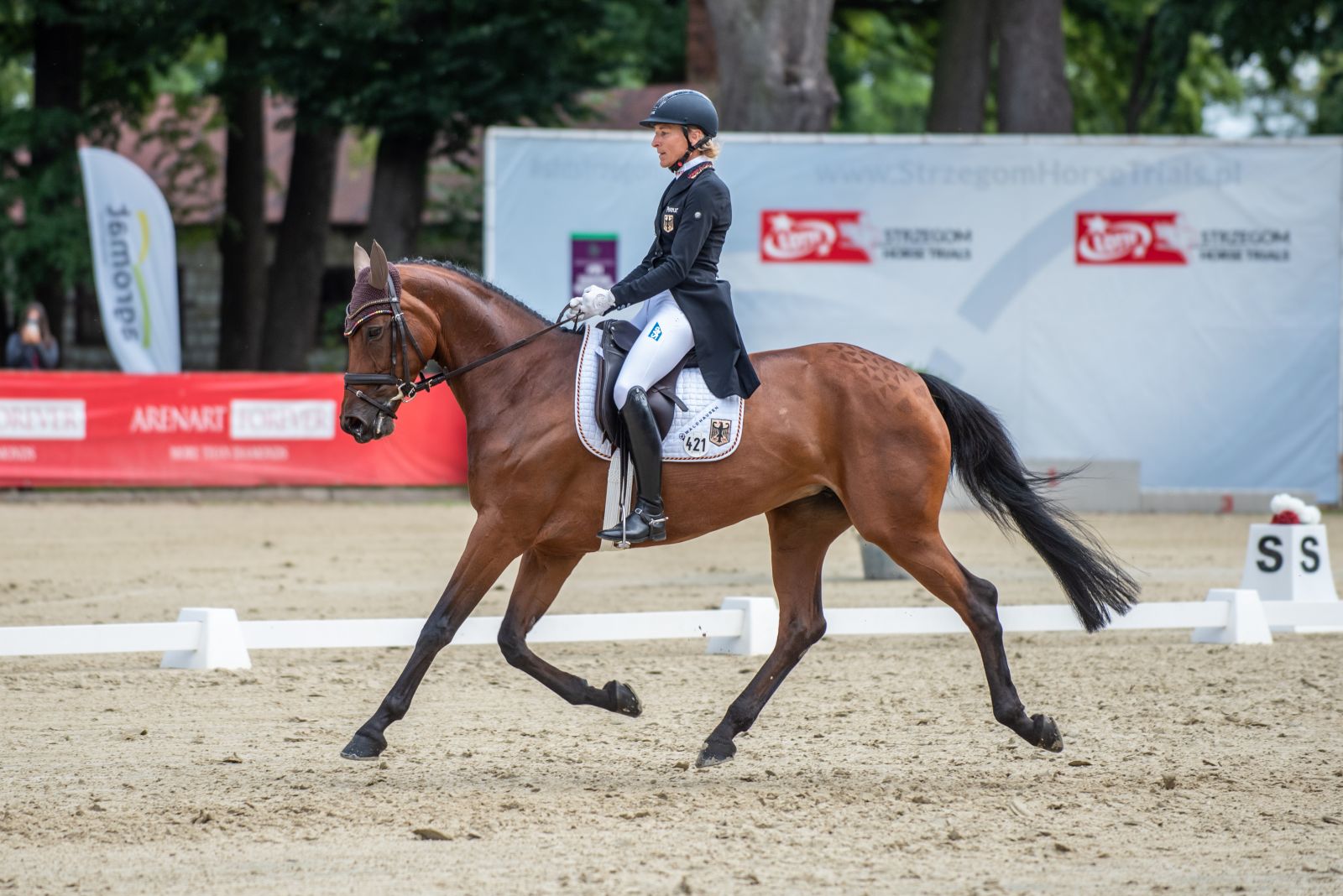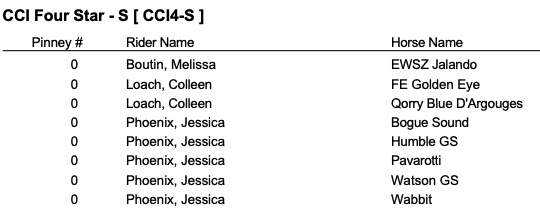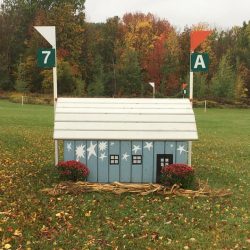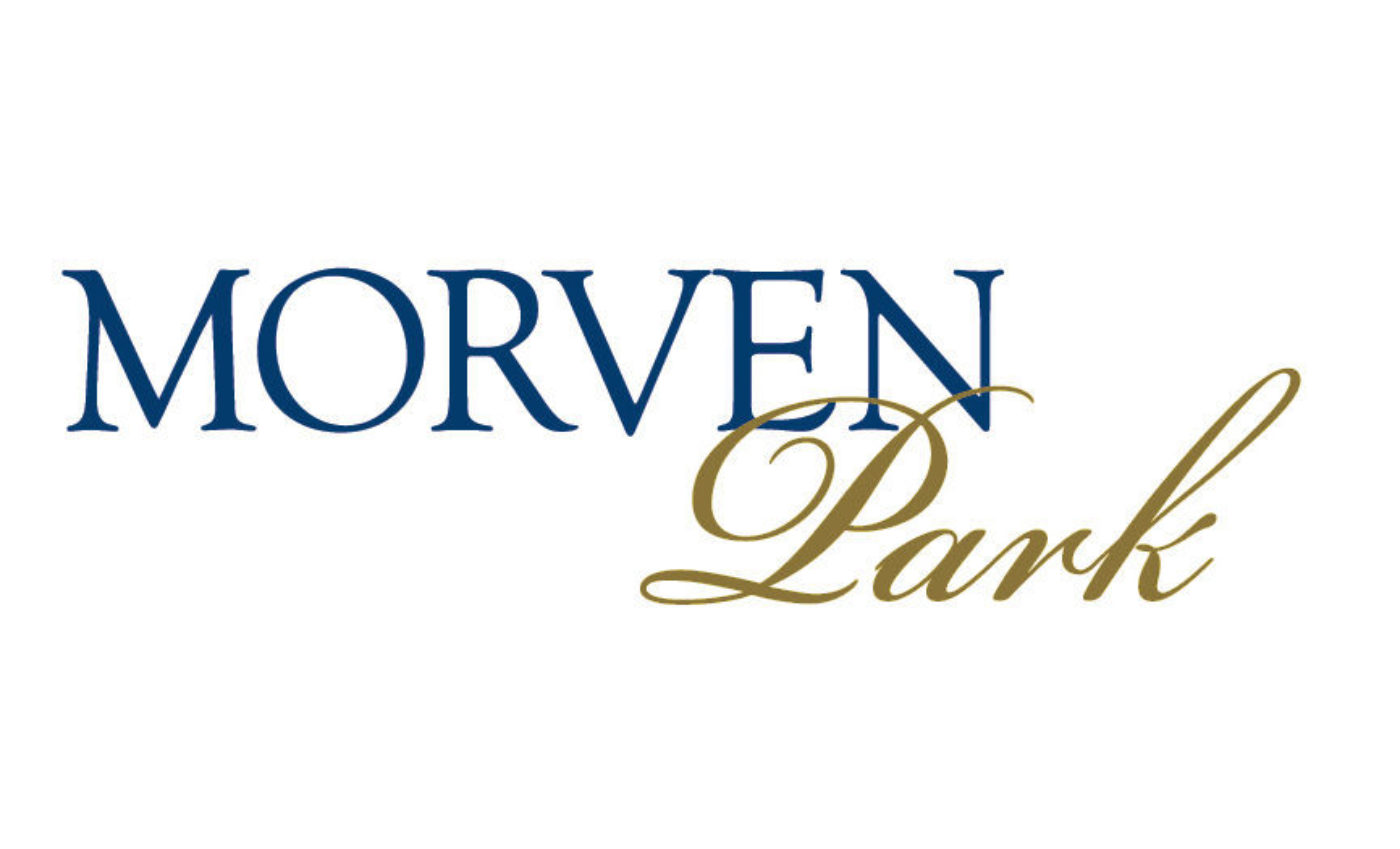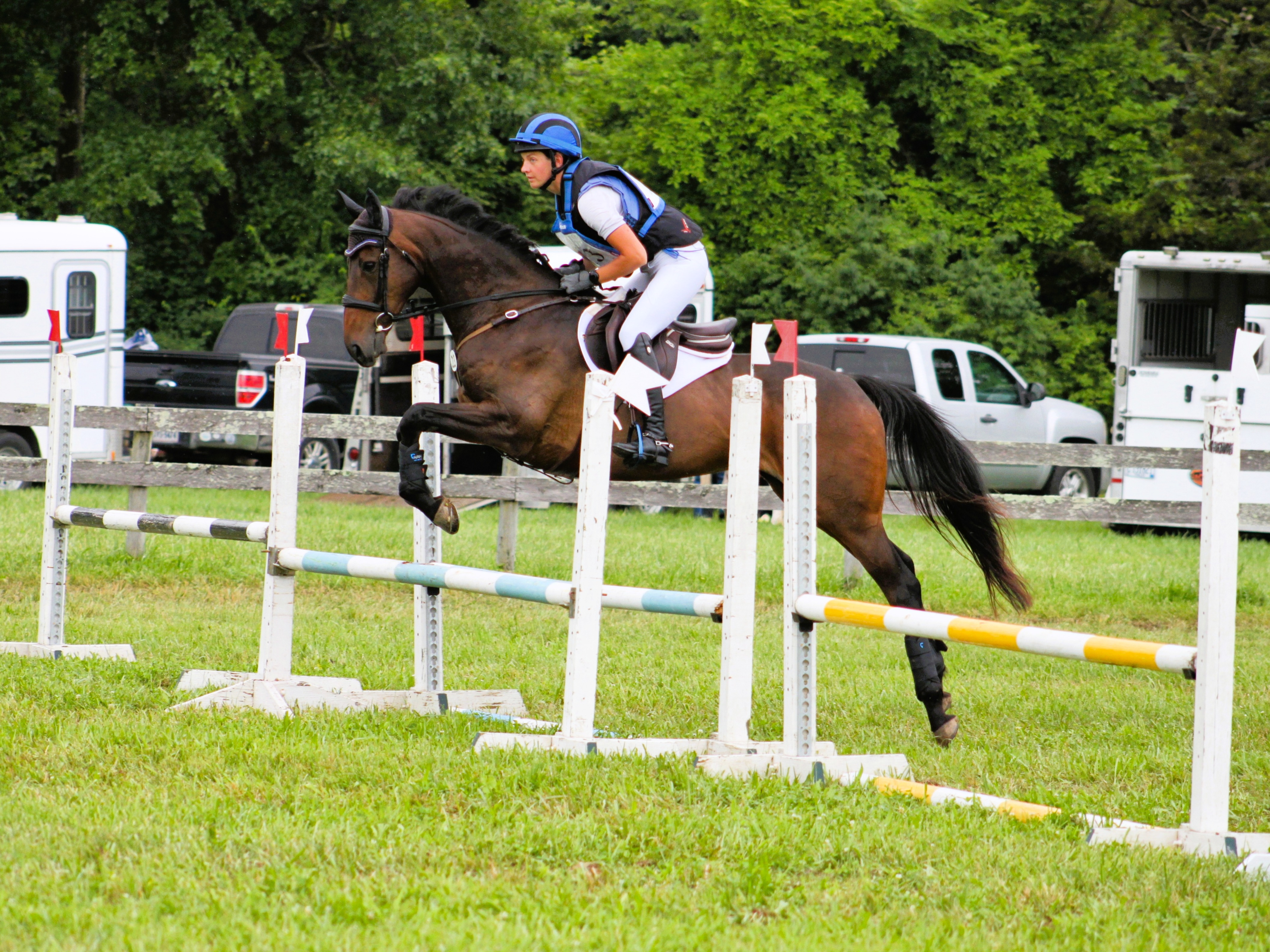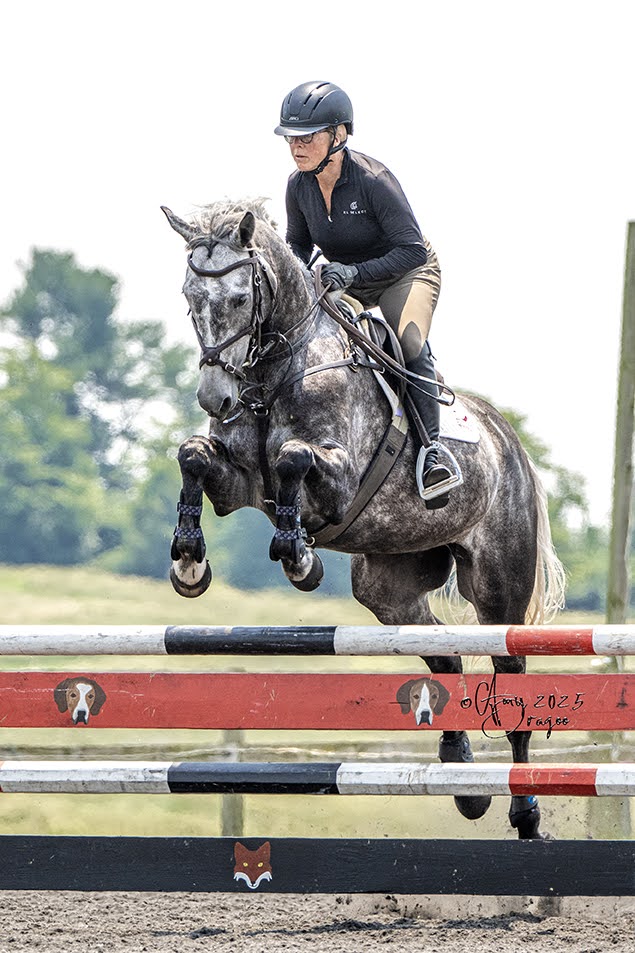
Will Coleman and Tight Lines. Photo by Shannon Brinkman for Erin Gilmore Photography.
The Advanced divisions at Morven Park in Leesburg, Va. got underway today with both the A and B classes doing their dressage and show jumping phases. Many combinations will look to use this weekend as a prep run and mettle-testing for fall three-day events (Galway (10/29-11/1) and Tryon (11/12-11/15) will both host a CCI4*L this fall). Leading the way after the first two phases of competition will be Will Coleman and Tight Lines (28.4) in the Advanced A and Ariel Grald on Leamore Master Plan (30.3) in the Advanced B.
The Conair Syndicate’s Tight Lines, a 13 year old French Thoroughbred gelding, threw down one of the best scores of his career today, earning a 28.4. “Phish” previously scored a 28.0 in the Advanced/Intermediate at Virginia Horse Trials in July but has otherwise never pulled in a sub-30 dressage. Will has worked tirelessly to coax greatness out of the gray gelding, and we certainly saw that work pay off today. A clear round on Kathy White’s show jumping would seal the deal and send this pair into the overnight lead in the Advanced A.

Will Coleman and Tight Lines. Photo by Shannon Brinkman for Erin Gilmore Photography.
It was easy to hear Will’s excitement at the “best version of himself” that Tight Lines put forth in his test this morning. The Thoroughbred gelding who raced in his previous career has taught Will a lot, he says, most of which involves patience and empathy for the horse and understanding how to reveal that best version consistently. “In his own way, maybe he’s trying a little too hard,” Will mused. “We’ve gotten some really great help from Ian Woodhead from last year…I’ve just learned to not give up, be patient, and trust that it’s going to come. He’s a funny horse; he’s definitely tricky, but I do love him and I’m lucky to have him.”
Boyd Martin and the Long Island Tea Syndicate’s Long Island T, who is bound for Galway Downs later this month, also added nothing to their dressage score of 29.1 to take second place in the A division following the first two phases.

Sharon White and Cooley On Show. Photo by Shannon Brinkman for Erin Gilmore Photography.
Sharon White, like many of her peers this weekend, is using Morven Park as a prep run for the new CCI4*L at Tryon International Equestrian Center next month. A 29.5 dressage score was enough for third place following dressage, and a double clear show jumping solidified her position with the 13 year old Irish gelding, Cooley On Show. “I was able to show him off a bit (in the dressage) today, and that was fun,” Sharon told EN. “And he’s such a super show jumper; he’s like a school horse in the warm-up. I feel like he’s always saying ‘just relax, Sharon, why do you get wound so tight?'”
With its established turf and rolling terrain, Sharon says it’s the perfect final prep for “Louie”. “I use this as a super fitness run for the rolling hills, the good pulls, and old, established turf,” she said. “Tremaine (Cooper) has done an excellent with the courses; they’re very positive, forward, proper cross country courses.” You can check out a preview of the track riders will see tomorrow from Course Walk App here.

Ariel Grald and Leamore Master Plan. Photo by Shannon Brinkman for Erin Gilmore Photography.
Heading up the Advanced B today will be Ariel Grald and Annie Eldridge’s Leamore Master Plan also put their best foot forward in the dressage this morning to earn a near-personal best of 30.3. Like Will and Tight Lines, this pair also showed their progression on the flat earlier this summer with a 28.6 on the flat at Virginia Horse Trials, and that hard work continued to pay off today. Ariel and Leamore Master Plan don’t have a spotless show jumping record, but records be damned today – they put in a clear round inside the time to remain on their dressage score overnight.
Taking second into tomorrow’s cross country for the B division will be Boyd Martin and the Luke 140 Syndicate’s Luke 140, also bound for Galway, on a two-phase score of 31.1.
Round out the top three in the Advanced B are Maya Black and Laurie Cameron’s Miks Master C on a score of 33.4. The 8 year old Swedish Warmblood gelding moved up to the Advanced level earlier this year, pre-pandemic, and the pair have since swung back into action nicely with two top-20 CCI4*S finishes leading up to this weekend.
The Advanced and Intermediate divisions will head out onto Tremaine Cooper’s cross country tomorrow beginning at 8 a.m. EST (the Intermediate riders will run cross country before the Advanced). You can check out the course preview from Course Walk App here.
Many thanks to the dream team of Erin Gilmore Photography and Shannon Brinkman for providing media photos throughout the weekend – you can order your own photos from Morven Park here. Stay tuned for much more from Morven Park. Go Eventing.
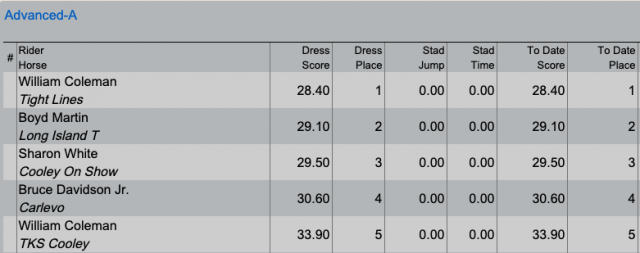

Morven Park Fall HT:Website, Entries & Ride Times, Program, Live Scores, EN’s Coverage, EN’s Twitter, EN’s Instagram









